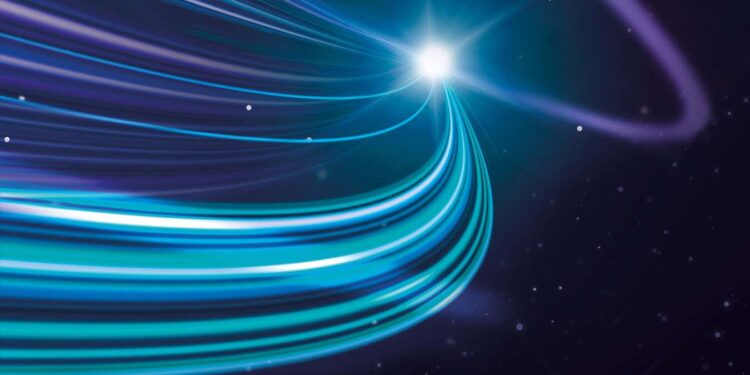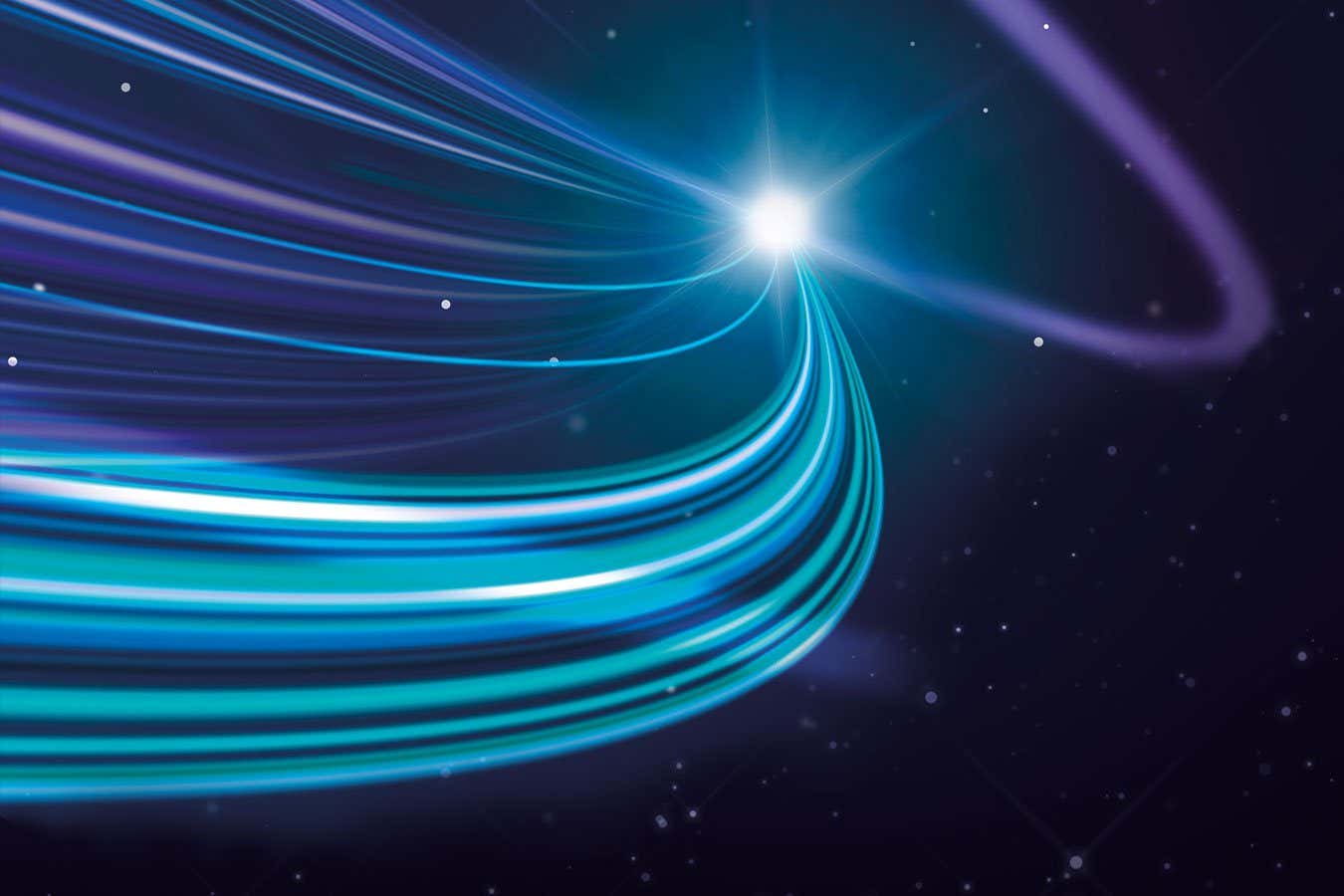
Getty Images/amana images RF
Here is a thought experiment for you: imagine shining a powerful laser at the moon, the beam cutting through space until it lands on its dusty grey surface. Now flick the laser so the spot of light sweeps from one side of the moon to the other. It would seem to streak across in an instant – traversing thousands of kilometres in a split second, even faster than the speed of light in a vacuum. How is that possible?
There is no laser pointer powerful enough to pull off this trick. And even if there were, don’t panic: nothing would be breaking the cast-iron law of physics that rules out anything moving faster than light. It is only an optical illusion. That said, there are real phenomena out there in the cosmos that create similar illusions. “Nothing with mass can accelerate from below the speed of light to above,” says astrophysicist Robert Nemiroff at Michigan Technological University. “But shadows and laser spots and illumination fronts can, and do, go faster than light around us all the time.”
Astronomers have long spotted these superluminal illusions, once dismissed as curiosities. But we are now realising some can reveal hidden, surprising details about the universe that no other observation can. Nemiroff even suggests a new type of illusion – light echoes appearing to travel backward in time – that could expose the inner workings of some of the most mysterious phenomena in our cosmos. And with the opening of the Vera C. Rubin Observatory, we might be on the cusp of seeing these fleeting illusions much more often.
Light echoes
For decades, astronomers have observed numerous examples of superluminal motion. The first came in 1901, when Thomas Anderson, an amateur astronomer and clergyman in Edinburgh, UK, noticed a new point of light in the Perseus constellation that outshone most other stars. Astronomers rushed to observe it, including those at the Greenwich Observatory in London, and were surprised by what they saw – an explosion whose glowing outer layers appeared to be expanding up to five times faster than the speed of light.
The event, later named Nova Persei 1901, was caused by a thermonuclear explosion called a nova on the surface of a dead star, a white dwarf. At first, its apparent superluminal behaviour baffled astronomers, but in 1939, French astronomer Paul Couderc explained that it was a light echo.
As the explosion’s light radiated outwards, it struck clouds of dust at various angles. Some regions lit up faster than others, not because the light was travelling faster, but because of their orientation relative to Earth and the nova. The result was an illusion: bright arcs of light that seemed to outrun the very light that caused them.
That isn’t the only illusion to have been discovered. Apparent superluminal motion is used to study powerful cosmic jets, streams of charged particles fired from active black holes, merging neutron stars and other exotic systems. These jets often travel close to the speed of light, and when they light up the surrounding dust, they can produce faster-than-light effects that depend on how we perceive them as they are pointed towards us.
It is something that a child making animals with their hands in front of a torch (or flashlight) might understand. Move your hand slightly closer to the light, and the shadows leap across the wall. The same principle applies in space, where distant sources of light and dust clouds act as the lamp and the screen, respectively.
Just last year, the superluminal jet of a galaxy called Centaurus A, about 12 million light years from Earth, was used to reveal its hidden structure. Astrophysicist David Bogensberger at the University of Michigan tracked a bright knot in the jet that behaved oddly. In radio waves, it appeared to move at 80 per cent of the speed of light, but in X-rays, the same feature seemed to race ahead, at 2.7 times the speed of light.
“This tells us that the radio and the X-ray data show something completely different, which is quite a recent discovery,” says Bogensberger. “There’s growing consensus that you really see two different populations of plasma within the jets that move differently and have different properties.”
That distinction, he says, could help refine our understanding of how jets form, what they are made of and how they evolve as they tear through space.
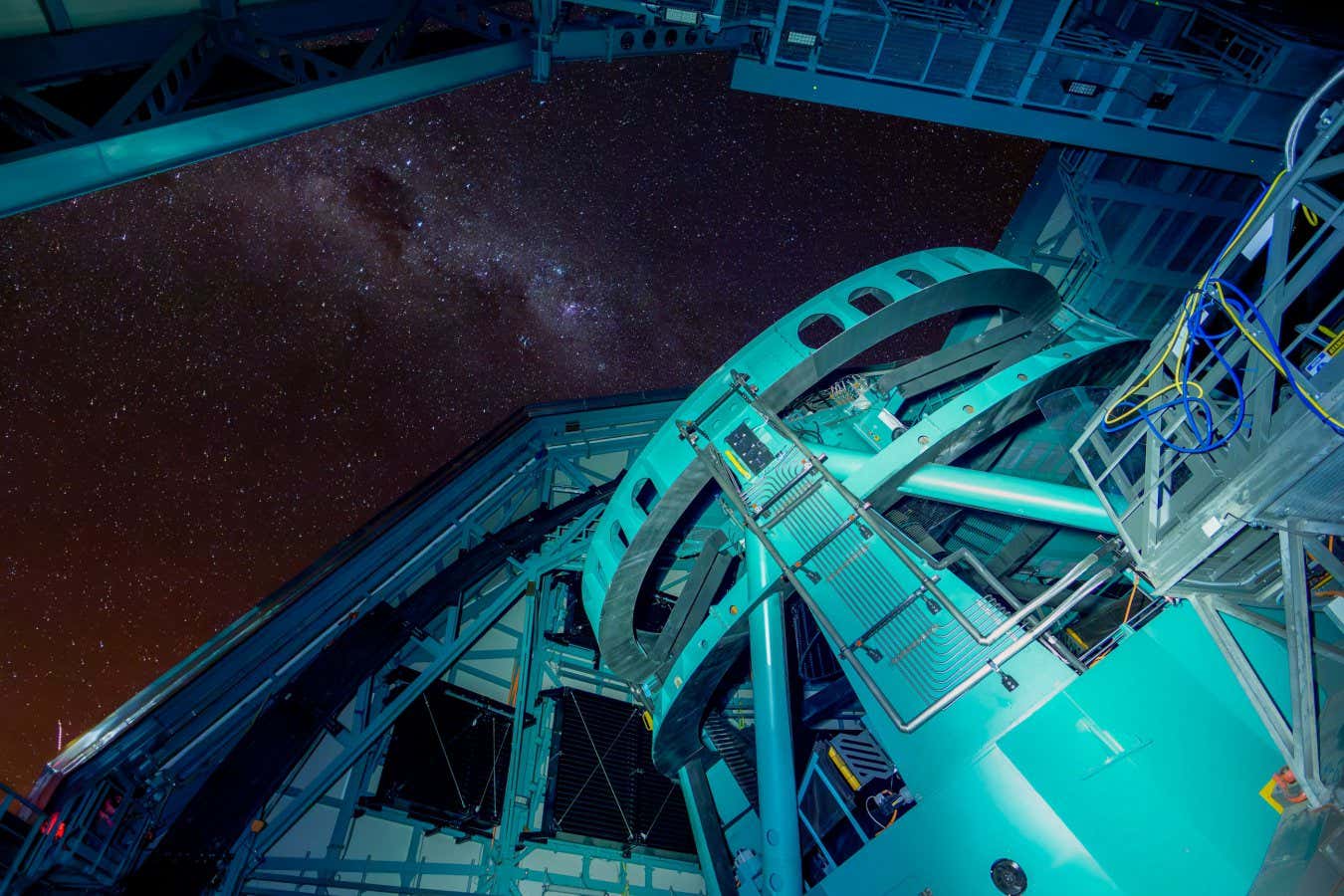
The Vera C. Rubin Observatory will scan the night sky every three to four days, ushering in a new age of high time-cadence astronomy
RubinObs/NSF/DOE/NOIRLab/SLAC/AURA/W. O’Mullane
You can also use superluminal motion to work out at what angle these narrow beams hit Earth, says astrophysicist Matt Nicholl at Queen’s University Belfast, UK, something not really possible by other methods. “If you measure the energy of a jet that’s coming right at you compared [with] a jet that’s going a slight angle away, you might get a very different answer,” says Nicholl.
That can give astronomers crucial information about how much energy is in the jet. “That tells you how stable neutron stars are and what the pressure is in the centre,” says Nicholl. “That’s fundamental nuclear physics that we can’t measure on Earth.”
But, as you might expect, catching these fast-moving signals is difficult. According to Bogensberger, astronomers observe objects that appear to move around 10 times the speed of light, but in rare cases, they can appear to reach 50 times light speed. Most telescopes seldom revisit the same patch of sky, making it easy to miss fleeting effects like these. But with the rise of high-cadence astronomy, scanning the sky repeatedly and in real time, that is beginning to change.
Image doubling
Scientists like Nemiroff and Jon Hakkila at the University of Alabama in Huntsville are hoping that this new data will strengthen a theory they proposed back in 2019 to explain one of the most puzzling phenomena in astrophysics: gamma-ray bursts (GRBs). These are sudden, brilliant flashes of high-energy light, thought to come from violent star deaths or merging neutron stars. But details of how they form and why they behave the way they do remain stubbornly unclear.
One enduring puzzle lies in their light curves: graphs that track a burst’s brightness over time. Instead of rising and falling smoothly as the burst explodes then fades, GRB light curves often show a ripple-like structure with at least three distinct peaks occurring during the rise, crest and fall of the main pulse. Some pulses contain dozens of such peaks. Stranger still, the first and last peaks often appear to mirror each other, as if the burst were unfolding and then rewinding.
“GRB light curves didn’t make any sense,” says Hakkila.
Physicists had offered explanations ranging from GRBs reflecting off cosmic barriers to complex interactions with clumpy mixes of plasma, radiation and magnetic fields. But these theories often felt contrived, and none explained why the strange echo-like structure was so common.
Hakkila found inspiration in Nemiroff’s earlier work. This had shown that, under certain conditions, a wave or particle that appeared to move faster than light through a medium – though still slower than light in a vacuum – could trigger an effect he called “relativistic image doubling”. To an observer, it could look like two versions of the same event: one unfolding normally, the other in reverse.
Hakkila took this concept and ran with it. In his new model, a wave or “impactor” within a GRB jet accelerates from subluminal to superluminal speeds. During this transition, the wave passes through the plasma and triggers a burst of radiation. Because it briefly moves faster than light can travel in that medium, the light it emits arrives at the observer in a strange order: first as a normal signal, and then again, playing in reverse. The result, thanks to relativistic image doubling, is a light curve that appears to echo itself: flaring, fading and then flaring again.
“It’s like somebody walks into a room, turns on all the lights, and then when they walk out of the room they remember to turn them all off in exactly the reverse order,” says Hakkila. He found this effect might explain at least 85 per cent of GRBs in a paper published in 2021. In 2023, researchers Dong-Jie Liu and Yuan-Chuan Zou at Huazhong University of Science and Technology in Wuhan, China, repeated the same analysis with newer data. Not only did their findings support the idea, but their paper revealed these mirrored signals could tell us how fast shockwaves travel through the plasma, or whether they are interacting with dense clumps along the way. Far from being observational noise, Liu and Zou argue that these ripples could be subtle signatures of how GRBs are built and how they explode.
Nemiroff, for his part, thinks the idea can stretch even further. Beyond GRBs, he suspects relativistic image doubling events might occur across the universe, too.
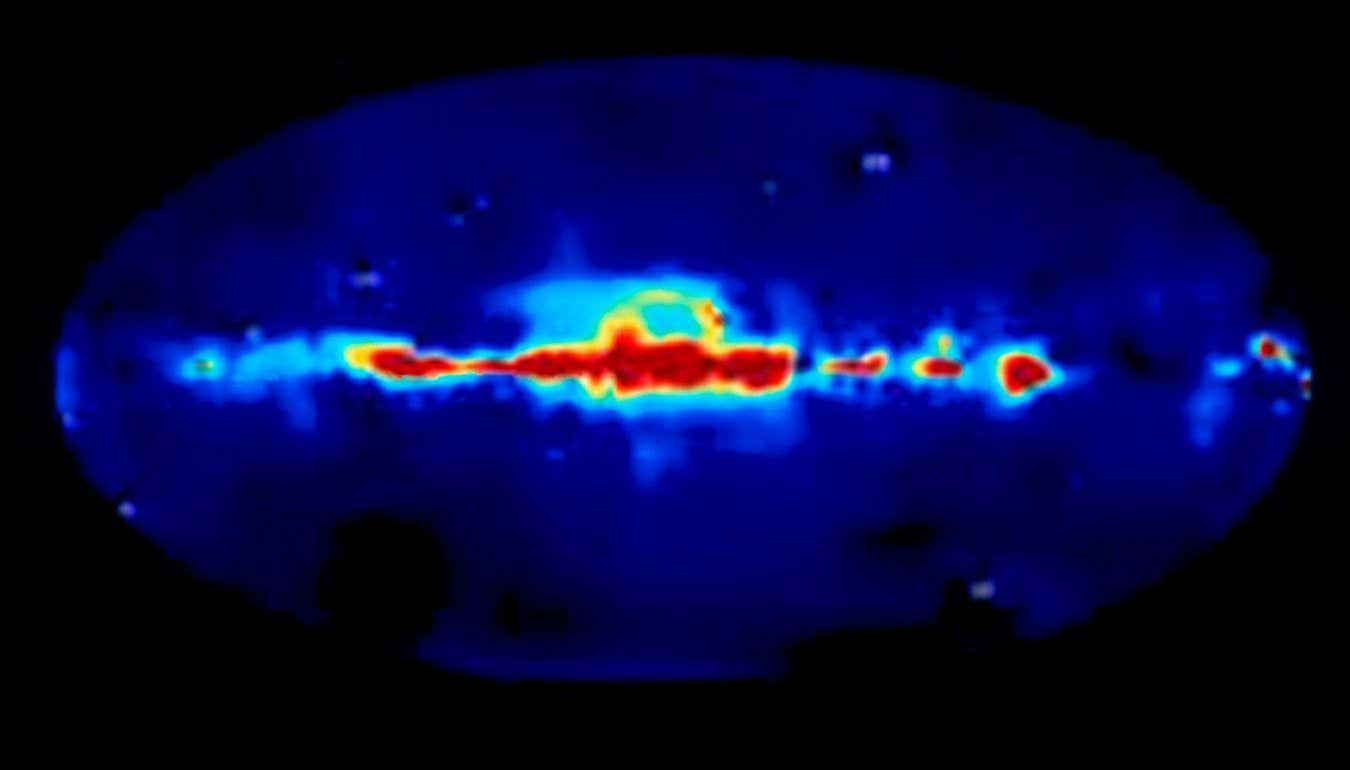
While the origins of gamma-ray bursts continue to puzzle scientists, their light carries clues as to the properties of some of the cosmos’ most explosive events. This map shows the Milky Way viewed in gamma rays
ESA
One possible candidate is rapidly spinning neutron stars, called pulsars. These often have blazing hot spots on their surface – regions linked to their magnetic poles. If such a pulsar was surrounded by a disc of dust, then one of these spots could scatter off the disc as it rotates towards us. With certain conditions, the scattered beam could appear to arrive before the light from the spot itself, creating the illusion of two identical spots moving in opposite directions.
“What you see is a pair of spots moving away from each other,” says Nemiroff. “You see one essentially moving in normal time, and one in reverse time.”
Now, as data from the Vera C. Rubin Observatory starts to accumulate as it scans the entire southern sky every three or four nights, he thinks there is a chance of actually spotting his superluminal image pairs.
“[Rubin] is a very good instrument to see things like this,” he says.
Nemiroff may have to wait. Rubin’s data is unlikely to be used immediately for esoteric physics searches like this, says Tessa Baker, a cosmologist at the University of Portsmouth, UK, because its early efforts will focus on more mainstream science such as finding galaxies, asteroids and supernovae. But Rubin, alongside detectors like LIGO, could be used to find another superluminal phenomenon: gravitational waves that move faster than light, she says.
That would be a radical discovery. Astronomers have observed that gravitational waves and light share the same speed limit, as predicted by Einstein’s theory of relativity. However, in some models proposed to explain dark energy, the universe may contain additional fields that alter how gravitational waves and light propagate. Light would remain tied to the speed limit we apply to it currently, but gravitational waves could interact with these fields and travel faster.
That would mean the ripples in space-time from a gravitational wave event might reach us before the photons, as picked up by Rubin, says Baker, and it might lend support to alternative theories of gravity.
Experimental light-speed illusions
If and when we do start seeing superluminal illusions more routinely, scientists want to be prepared to wring the most research value out of them. To that end, some are starting to experiment with these effects in the lab. Theoretical physicist Simon Horsley at the University of Exeter, UK, and his colleagues have tested materials such as indium tin oxide that have tunable properties, sweeping lasers across them in a setup that mimics the moon laser pointer experiment. In theory, no information should travel faster than light across the material’s surface. But is that really the case?
What Horsley and his team found is that the refractive index – a measure of how much the material bends light – appears to shift in step with the laser’s movement, and at speeds that seem to exceed the speed of light. “You have a patch that whizzes across the material,” he says. The result is a reflection that seems to come from something moving faster than light – not a real object, but an optical effect.
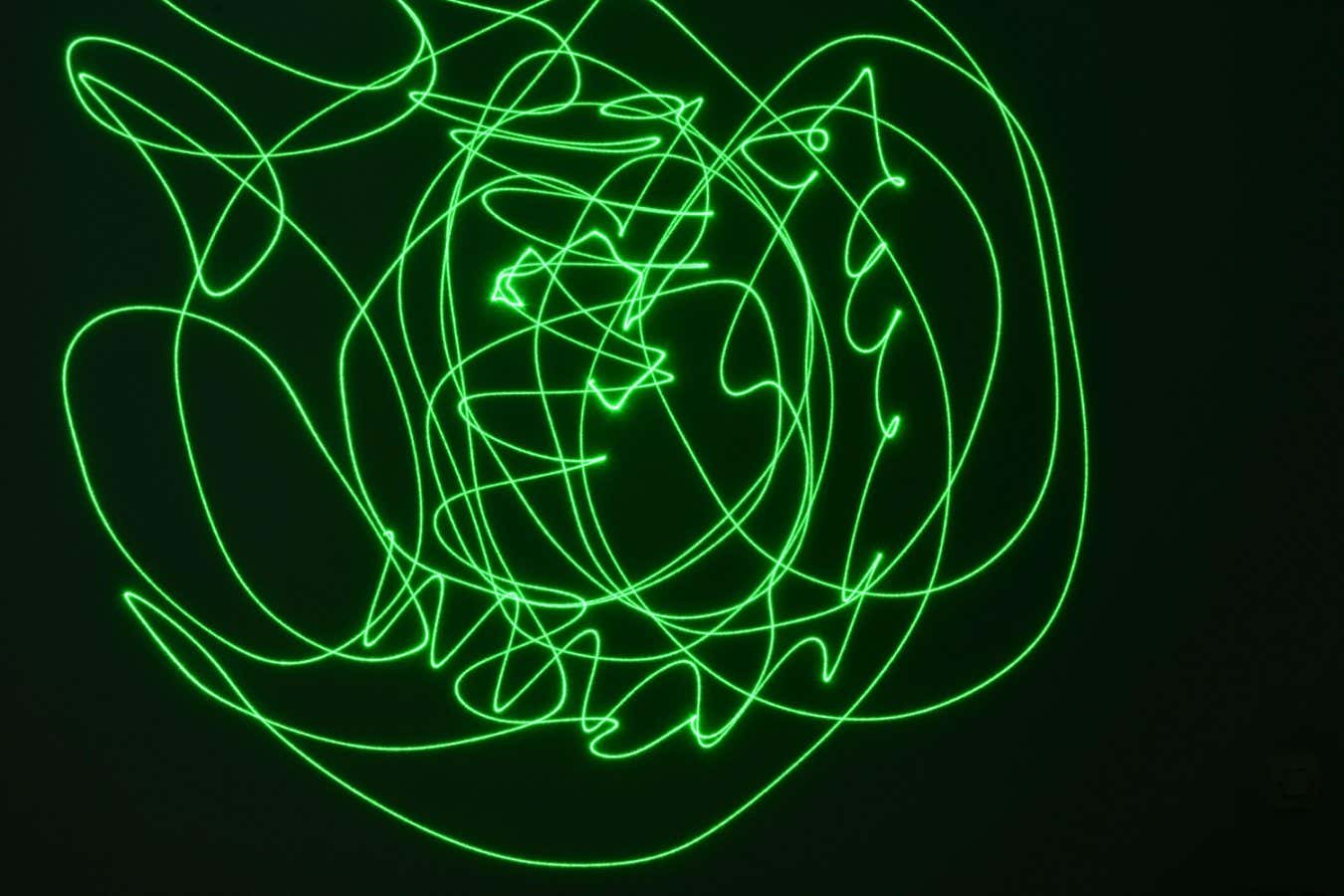
A laser pointer can trace out paths in space. A dot from such a pointer, if aimed at the moon, would seem to race across it faster than light itself
GPKphotos/Alamy
This hinges on the Doppler shift, the same principle that makes an ambulance siren drop in pitch as it passes. “You can extend it all the way to things moving faster than light,” says Horsley, resulting in the angle of the reflected light visibly flipping as it crossed the light-speed threshold.
This matters because Doppler shifts are one of astronomy’s main tools for inferring motion – used to measure how fast galaxies recede, how jets are angled or how stars orbit one another. If superluminal illusions can distort those shifts in predictable ways, lab experiments like Horsley’s could help us interpret what we see in the sky more accurately – effectively calibrating our expectations against known optical effects.
The material that Horsley works with could also be used to test other superluminal effects that have yet to be discovered. “We’ve been trying to think if there’s any exotic physics we can explore with this,” he says, “because we’re not really moving anything faster than light, but it does behave like an object that’s moving faster than light.” Other experiments have probed the effects of superluminal motion too. Earlier this year, Dominik Hornof, a physicist at Vienna University of Technology in Austria, and his colleagues used laser pulses to simulate an object moving close to the speed of light. They found that as the object moved across our field of view, it appeared to rotate, with light from the front arriving sooner than light from the back.
Hornof’s team also showed that if the object were turned slightly to travel towards or away from us, like how a jet from a black hole or neutron star merger can sometimes be orientated, it wouldn’t just rotate – it would suddenly appear to be breaking the light-speed limit. “If we changed the line of sight to 2.5 degrees, we would receive a superluminal motion of 22 [times the speed of light],” says Hornof. “This would be crazy.”
These Earth-based simulations could provide a testbed for the physics behind superluminal illusions, informing how astronomers pick apart signals they may soon receive from the Rubin data.
And there might yet be many more illusions awaiting discovery, including Nemiroff’s double images, if they occur as expected. “It’s so conceptually cool,” says Nemiroff. “There are so many little surprises we keep running into.” He predicts it might be similar to how gravitational lensing, the concept of light being bent and warped by massive objects, started as a niche idea before it was observationally seen in abundance.
“Now there are hundreds of lensing events that are being studied,” he says. Perhaps the same might be true of superluminal events like double image phenomena or the simpler example of a jet sweeping across a cloud of cosmic dust, like a laser pointer skimming across the moon.
Topics:
Source link : https://www.newscientist.com/article/2495828-how-faster-than-light-explosions-could-reveal-the-universes-secrets/?utm_campaign=RSS%7CNSNS&utm_source=NSNS&utm_medium=RSS&utm_content=home
Author :
Publish date : 2025-09-24 16:00:00
Copyright for syndicated content belongs to the linked Source.

